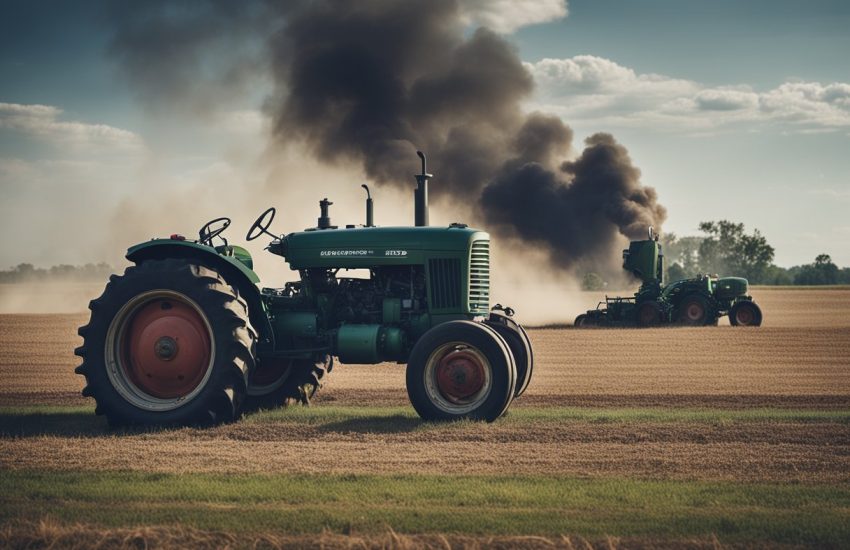How to Plant Lettuce Seeds: A Step-by-Step Guide
Lettuce is a popular leafy green that is easy to grow and provides a delicious addition to salads, sandwiches, and other dishes. Planting lettuce seeds is a simple process that can be done in a small garden bed, container, or even indoors. In this article, we will provide step-by-step instructions on how to plant lettuce seeds to ensure a successful harvest.
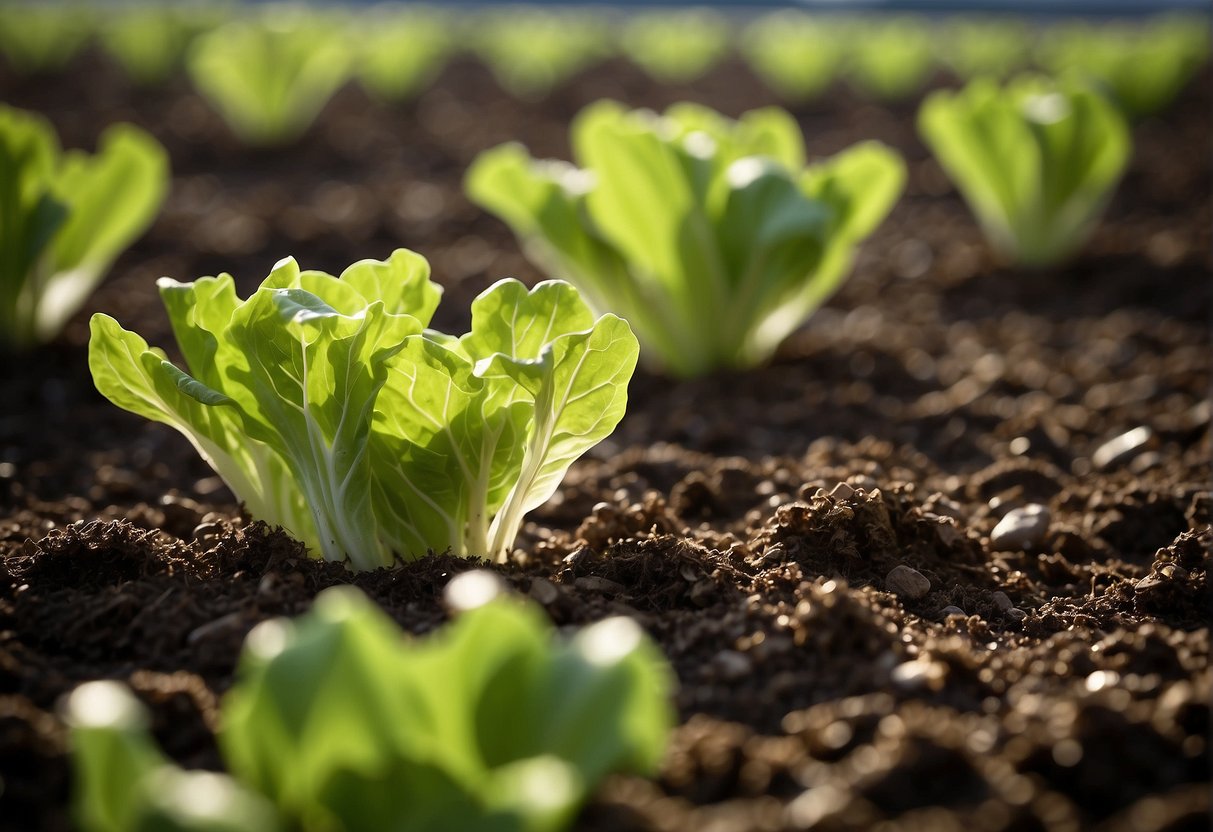
Before planting lettuce seeds, it is important to choose the right variety for your growing conditions. Lettuce comes in many different types, including looseleaf, romaine, and iceberg. Consider factors such as the amount of sunlight your growing area receives, the temperature, and the length of your growing season when selecting a lettuce variety. Once you have chosen the right type of lettuce, it’s time to prepare the soil and plant the seeds.
Preparing the Soil
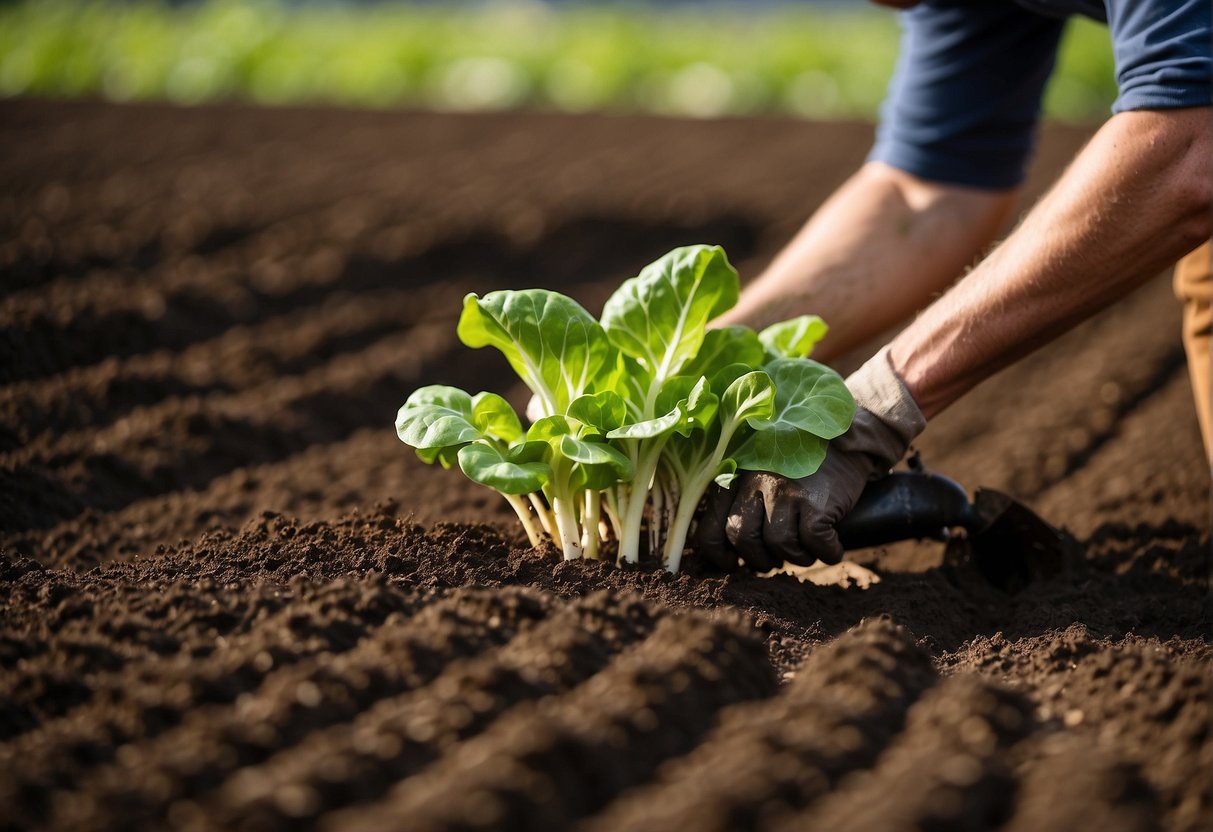
Before planting lettuce seeds, it is important to prepare the soil properly. This will ensure that the seeds have the best chance of germinating and growing into healthy plants. There are a few things to consider when preparing the soil, including choosing the right soil and enriching it with compost.
Choosing the Right Soil
Lettuce seeds grow best in soil that is well-drained, rich in organic matter, and has a slightly acidic pH. It is important to choose a soil that meets these requirements to ensure the best possible growing conditions for your lettuce.
When choosing a soil, look for one that is labeled as “potting soil” or “seed starting mix.” These types of soils are specially formulated for starting seeds and will provide the right balance of nutrients and drainage.
Enriching the Soil with Compost
To give your lettuce seeds an extra boost, you can enrich the soil with compost. Compost is a rich source of organic matter that will help improve the soil structure, increase water retention, and provide nutrients for your plants.
To add compost to your soil, mix in a 2-3 inch layer of compost with the top 6-8 inches of soil. This will ensure that the compost is evenly distributed throughout the soil and will provide the best possible growing conditions for your lettuce seeds.
By preparing the soil properly, you can give your lettuce seeds the best possible chance of success. Choosing the right soil and enriching it with compost will ensure that your seeds have the nutrients and growing conditions they need to thrive.
Selecting Lettuce Varieties

When it comes to planting lettuce seeds, selecting the right variety is crucial for a successful harvest. There are several types of lettuce to choose from, each with its own unique flavor and texture. In this section, we will discuss how to understand different types of lettuce and the best varieties for your climate.
Understanding Different Types of Lettuce
There are four main types of lettuce: romaine, iceberg, leaf lettuce, and butterhead. Each type has its own characteristics that make it suitable for different dishes and growing conditions.
Romaine lettuce is a tall, sturdy plant with a slightly bitter taste. It is commonly used in Caesar salads and sandwiches. Iceberg lettuce is a round, crunchy head of lettuce that is mild in flavor. It is often used in salads and on sandwiches.
Leaf lettuce is a loose-leaf variety that comes in a range of colors, including green, red, and purple. It has a delicate flavor and is perfect for salads. Butterhead lettuce, also known as Bibb lettuce, has a soft texture and a sweet, buttery flavor. It is often used in salads and sandwiches.
Best Varieties for Your Climate
When selecting lettuce varieties, it is important to consider your climate. Some varieties are better suited for cooler temperatures, while others can tolerate heat and humidity.
For cooler climates, consider planting crisphead or looseleaf varieties. Crisphead lettuce, such as the popular Iceberg variety, is slow to bolt and can withstand cooler temperatures. Looseleaf lettuce, such as Red Sails or Salad Bowl, are easy to grow and can be harvested continuously throughout the growing season.
For warmer climates, consider planting heat-tolerant varieties such as romaine or leaf lettuce. Romaine lettuce, such as the popular Cos variety, can withstand heat and humidity and is slow to bolt. Leaf lettuce, such as Black Seeded Simpson or Jericho, are also heat-tolerant and can be harvested continuously throughout the growing season.
By understanding the different types of lettuce and selecting the best varieties for your climate, you can ensure a bountiful harvest of fresh, delicious lettuce.
Planting Lettuce Seeds
Lettuce is a cool-season crop that can be grown in the spring and fall. Planting lettuce seeds is a simple process that can be done either indoors or outdoors. In this section, we will discuss the two methods of planting lettuce seeds and the optimal planting depth and spacing.
Sowing Seeds Indoors
Seed starting is a great way to get a head start on the growing season. To start lettuce seeds indoors, fill a seed tray with moist potting soil and sprinkle the seeds on top. Cover the seeds with a thin layer of soil and mist with water. Keep the soil moist and warm, and the seeds should germinate in 7-10 days.
Once the seedlings have grown to about 2-3 inches tall, they can be transplanted into individual pots or directly into the garden. Be sure to harden off the seedlings by gradually exposing them to outdoor conditions for a few hours each day before transplanting.
Direct Sowing Outdoors
Direct sowing lettuce seeds outdoors is another option. Choose a location with well-draining soil and partial shade. Sow the seeds thinly and cover with a thin layer of soil. Keep the soil moist and the seeds should germinate in 7-10 days.
Thin the seedlings to the recommended spacing once they have grown to about 1-2 inches tall. This will ensure that each plant has enough space to grow and develop properly.
Optimal Planting Depth and Spacing
The optimal planting depth for lettuce seeds is 1/4 inch. Planting the seeds too deep can result in poor germination, while planting them too shallow can cause them to dry out.
The recommended spacing for lettuce plants is 6-12 inches apart, depending on the variety. This will allow each plant to have enough space to grow and develop a healthy root system.
In conclusion, planting lettuce seeds can be done either indoors or outdoors. Sowing seeds indoors allows for an early start to the growing season, while direct sowing outdoors is a simple and easy method. The optimal planting depth and spacing for lettuce seeds are important factors to consider for a successful harvest.
Caring for Lettuce Plants
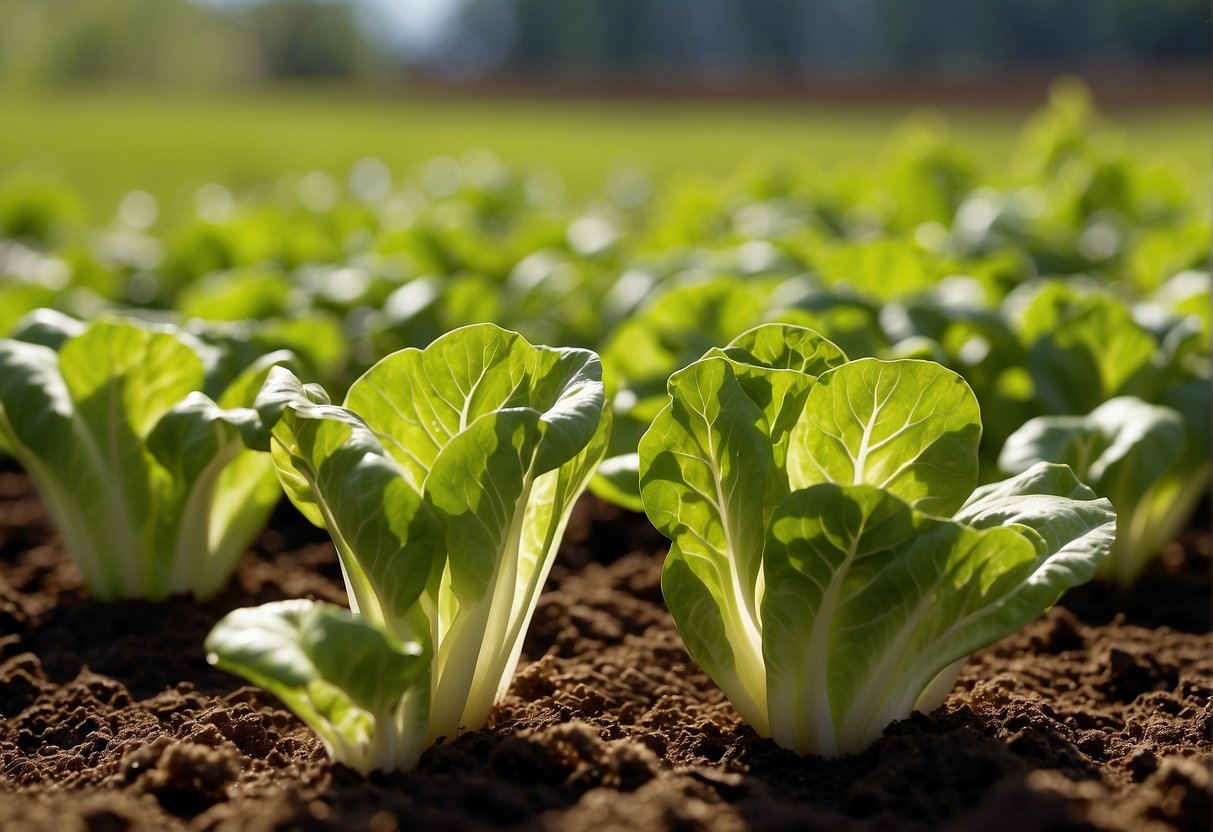
Watering and Fertilizing
Lettuce plants require consistent moisture to grow well. Water them regularly to ensure that the soil stays moist but not waterlogged. Avoid overhead watering, as it can promote the growth of fungal diseases. Instead, water the plants at their base.
Fertilizing the plants with nitrogen-rich organic fertilizers, such as fish emulsion, can help them grow faster and produce more leaves. However, be careful not to over-fertilize, as this can lead to burnt leaves and stunted growth.
Managing Light and Temperature
Lettuce plants prefer cooler temperatures and partial shade. They can tolerate full sun, but only if the soil is kept consistently moist. If the plants receive too much direct sunlight, they can wilt and become bitter.
To keep the plants cool, mulch around their base with straw or other organic materials. This will help retain moisture and keep the soil temperature lower.
Protecting from Pests and Weeds
Aphids and other pests can damage lettuce plants, so it’s important to keep an eye out for them. If you notice any pests, remove them by hand or use an organic pesticide.
Weeds can also compete with lettuce plants for nutrients and water, so it’s important to keep the area around the plants weed-free. Mulching can help prevent weed growth, but you may also need to pull weeds by hand.
Overall, caring for lettuce plants requires attention to detail and consistent care. By following these tips, you can help your plants grow healthy and strong.
Harvesting and Storing Lettuce
When and How to Harvest
Harvesting lettuce is a simple process that requires a few basic steps. The first step is to determine when the lettuce is ready to be harvested. This can be done by examining the outer leaves of the lettuce plant. If the outer leaves are fully grown and have a bright green color, then the lettuce is ready to be harvested.
To harvest lettuce, simply cut the lettuce leaves from the stem using a sharp knife or scissors. It is important to avoid damaging the stem or the roots of the plant while harvesting. Once the leaves have been harvested, the remaining lettuce plant will continue to grow and produce more leaves.
Storing Lettuce for Freshness
Storing lettuce properly is essential for maintaining its freshness and flavor. The best way to store lettuce is to place it in a plastic bag and store it in the refrigerator. This will help to keep the lettuce crisp and fresh for up to a week.
Before storing lettuce, it is important to wash it thoroughly and remove any excess water. This will help to prevent the lettuce from becoming soggy or wilted while in storage. Once the lettuce has been washed and dried, it can be placed in a plastic bag and stored in the refrigerator.
It is important to note that lettuce should not be stored near fruits or vegetables that produce ethylene gas, such as apples or bananas. This gas can cause the lettuce to spoil more quickly. By following these simple tips, you can ensure that your harvested lettuce stays fresh and delicious for as long as possible.
Extending the Growing Season
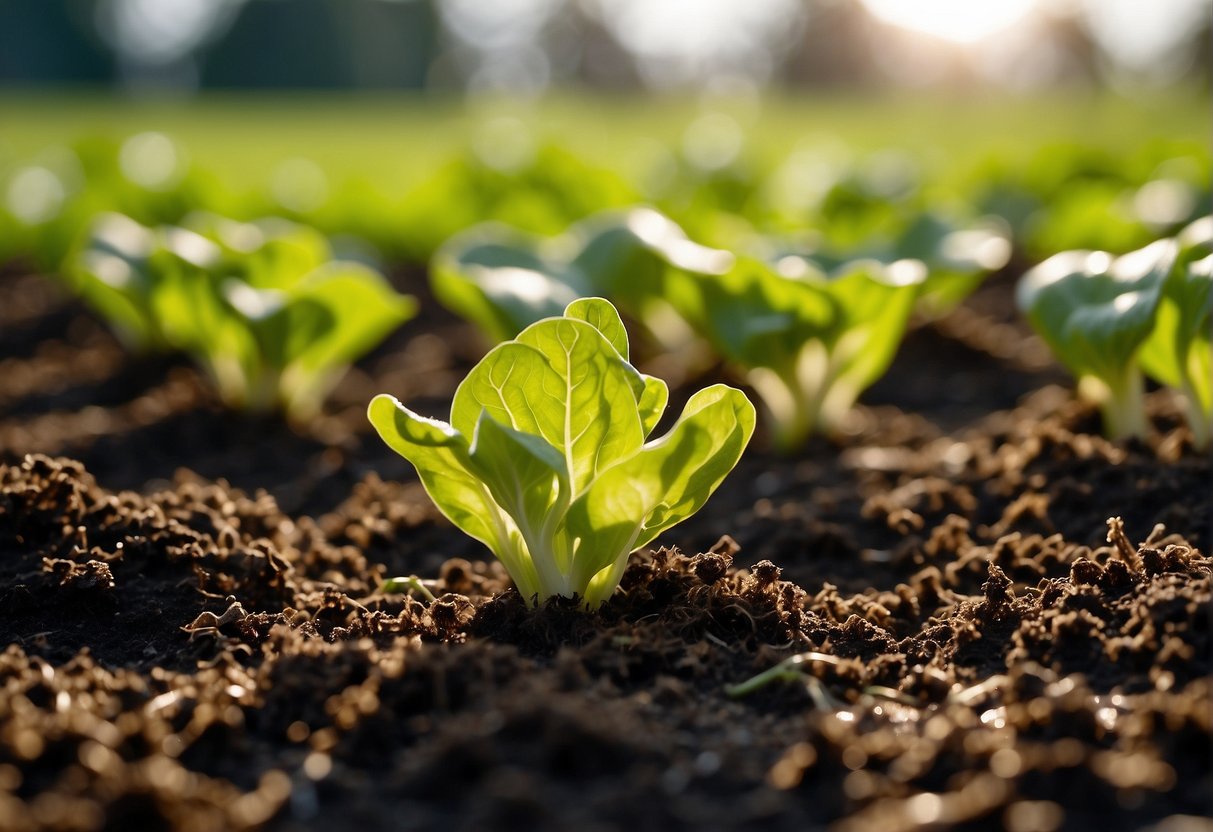
Lettuce is a cool-season crop that thrives in the spring and fall when temperatures are mild. However, with proper planning, it is possible to extend the growing season and enjoy fresh lettuce for a longer period.
Planning for Continuous Harvest
To extend the growing season, it is important to plan for continuous harvest. This means planting lettuce seeds in succession, so that there is always a new batch of lettuce ready to harvest. To do this, start by planting lettuce seeds in early spring, and then plant additional seeds every two weeks until late summer. This will ensure that there is always a new batch of lettuce ready to harvest.
Another way to plan for continuous harvest is to choose lettuce varieties with different maturity dates. This will allow you to stagger the harvest and ensure that there is always fresh lettuce available. For example, plant a variety of lettuce that matures in 30 days, another that matures in 45 days, and another that matures in 60 days.
Transitioning to Fall Crop
As the summer comes to an end, it is time to start thinking about transitioning to a fall crop of lettuce. This is important because lettuce is a cool-season crop that does not tolerate hot weather. To prepare for a fall crop, start by planting lettuce seeds in late summer, about 6-8 weeks before the first frost.
When planting lettuce for a fall crop, choose varieties that are cold-tolerant and slow to bolt. Bolting is when lettuce plants go to seed prematurely, which can happen in hot weather. By choosing cold-tolerant varieties, you can ensure that your lettuce will thrive in the cooler temperatures of the fall.
In conclusion, extending the growing season of lettuce is possible with proper planning and execution. By planting lettuce seeds in succession and choosing the right varieties, you can enjoy fresh lettuce for a longer period. Additionally, transitioning to a fall crop of lettuce is important to ensure that your plants thrive in the cooler temperatures of the fall.
Frequently Asked Questions
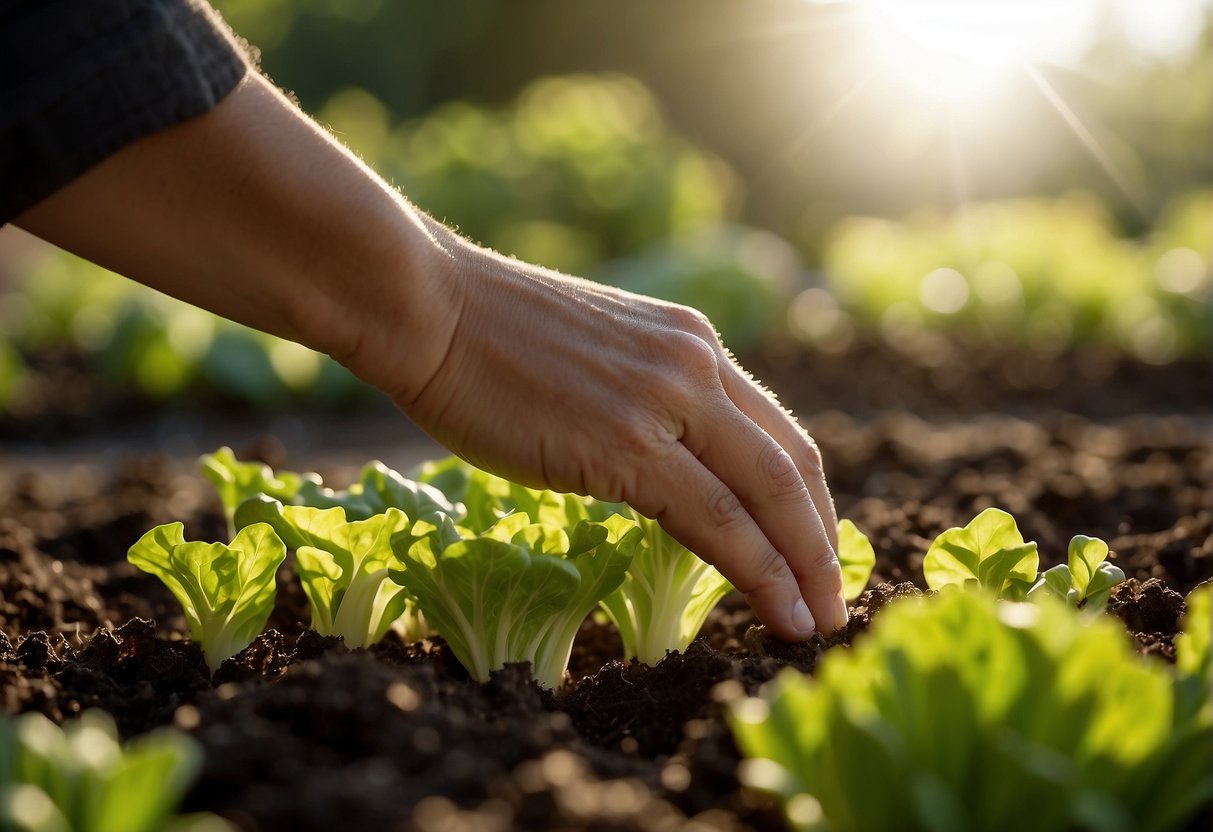
What is the ideal depth for sowing lettuce seeds?
Lettuce seeds should be sown at a depth of approximately 1/8 to 1/4 inch (3-6 mm) in well-draining soil. If the soil is too compact, it can be loosened with some sand or perlite to allow for better drainage.
What is the recommended spacing for growing lettuce plants?
Lettuce plants should be spaced approximately 6-8 inches (15-20 cm) apart to allow for adequate air circulation and room for growth. However, this spacing can vary depending on the variety of lettuce being grown.
Can lettuce be effectively grown alongside other plants, and if so, which make the best companions?
Lettuce can be grown alongside other plants such as carrots, radishes, and onions. These plants can help repel pests and provide shade for the lettuce. However, lettuce should not be planted alongside other members of the lettuce family, such as cabbage or kale.
Is it possible to grow lettuce successfully in containers, and what are the best practices?
Yes, lettuce can be grown successfully in containers. It is important to choose a container that is at least 6 inches (15 cm) deep and has drainage holes. The soil should be well-draining and the container should be placed in an area that receives at least 6 hours of sunlight per day.
What are the steps for starting lettuce seeds indoors to ensure healthy growth?
To start lettuce seeds indoors, fill a seed tray with well-draining soil and sow the seeds at a depth of 1/8 to 1/4 inch (3-6 mm). Keep the soil moist but not waterlogged, and place the tray in a warm, sunny area. Once the seedlings have grown to a height of 2-3 inches (5-8 cm), they can be transplanted to a larger container or directly into the garden.
How can I grow lettuce using hydroponics or in water-based systems?
Lettuce can be grown using hydroponics or in water-based systems by placing the seeds in net pots and suspending them in a nutrient-rich solution. It is important to monitor the pH and nutrient levels of the solution to ensure healthy growth.

